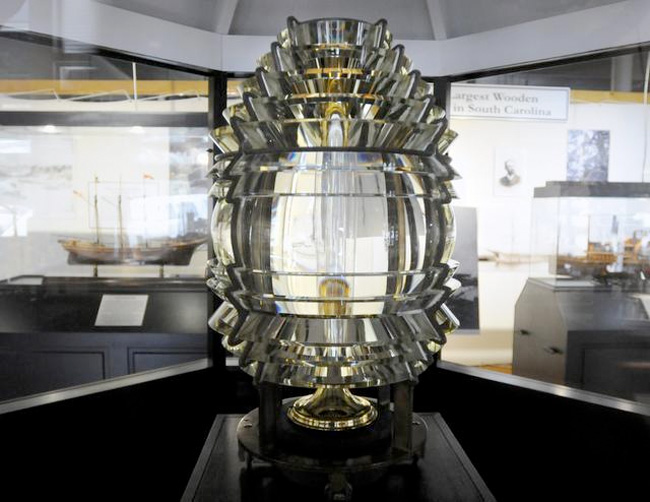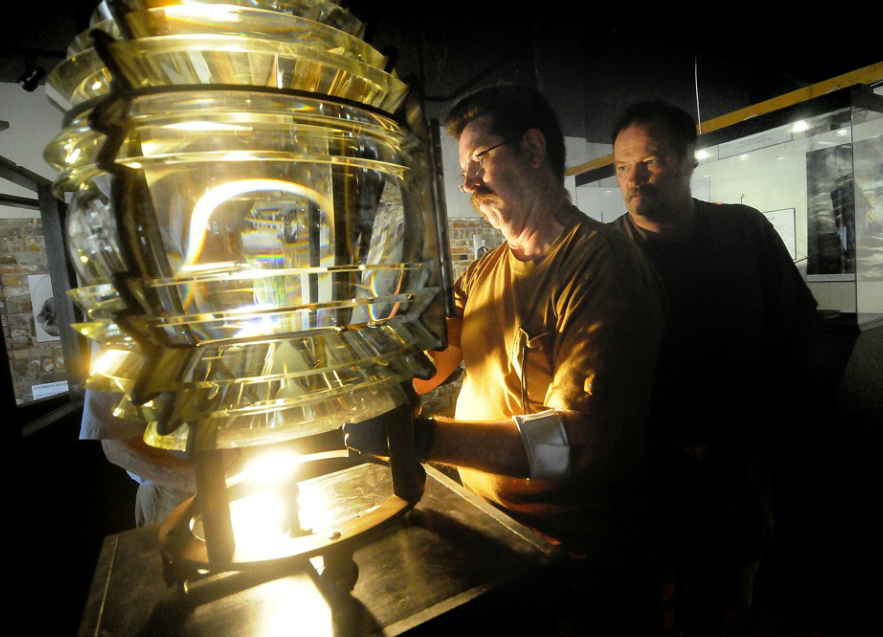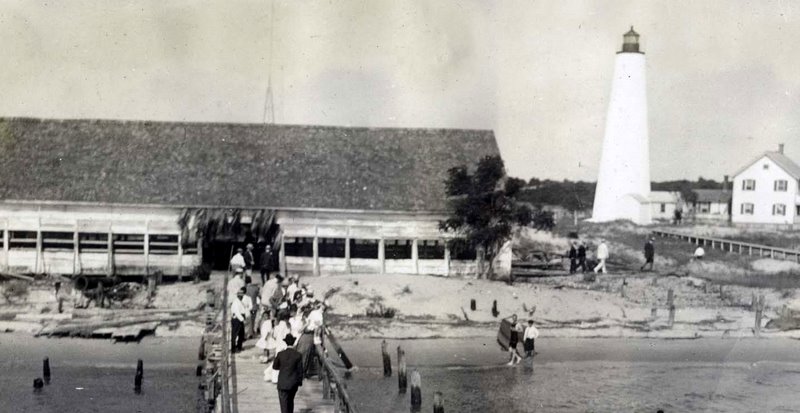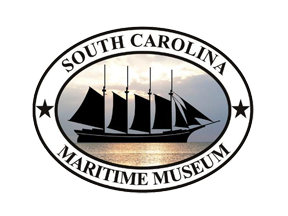The light stuff: Georgetown Lighthouse lens is beacon for exhibit

By Jason Lesley Coastal Observer
Like a jeweler putting a diamond into a setting, Joe Cocking lifted the sparkling Fresnel lens from the Georgetown lighthouse into its display at the South Carolina Maritime Museum Sunday.
The lens was installed at the lighthouse in the 1870s and used for more than 100 years to direct ships into Winyah Bay. Visible for 10 to 15 miles out to sea, the Georgetown light was the first thing a ship’s captain would see once he sailed south from Cape Fear or north from Charleston, according to museum board member and author Mac McAlister.
The lens was removed in 1986 when the lighthouse beacon was automated. It has been on display at the Coast Guard’s 7th District headquarters in Miami since then.
“We’re getting it back to where it belongs,” said Petty Officer First Class Dave Browne, who is in charge of the Aids to Navigation team at the Georgetown Coast Guard Station. “The lens belongs with the lighthouse.”
Georgetown’s lighthouse was placed on the National Register of Historic Places in 1974.

Browne said the Coast Guard hired Cocking, of the Lighthouse Lamp Shop in Orange Park, Fla., to transport the lens from Miami to Georgetown once the 10-year loan agreement with the museum was approved. “He’s a certified professional in handling these lenses,” Browne said. “It’s basically priceless.”
The museum was required to build a secure enclosure with a pedestal for the lens, buy a lamp to illuminate it, and insure it for $250,000. Randy Kinard, a cabinetmaker and past competitor in the Georgetown Wooden Boat Challenge, built a wood and glass enclosure that resembles the lighthouse’s lantern room. It’s not exact because the glass enclosure at the top of the Georgetown lighthouse has 10 sides. Kinard’s reproduction has a simpler eight sides, but the dimensions of the room are the same.
“They used to do odd ball things every once in awhile,” Cocking said of the 10-sided lantern room. “This is a very nice display. I like the enclosure.”
Cocking showed museum personnel how to clean the lens so he won’t have to return for an inspection until the 10-year loan agreement is nearly complete.
There is no serial number on the lens, making it hard to date, Browne said. The lens gets its name from Augustin Fresnel, a French physicist who invented the system of glass prisms that focus light from a diffuse source into a beam. The Georgetown lighthouse had a smaller, fifth-order lens as opposed to one at a major port like Charleston with a first-order lens.

The first lighthouse at North Island was built in 1801 after two Clipper ships ran aground and sank near the entrance to Winyah Bay. Made of cypress, the lighthouse stood 72 feet high. A keeper and an assistant kept the lamp burning with whale oil from a tank on the grounds. A storm in 1806 destroyed the wooden lighthouse, and it was replaced with a brick structure that had walls 6 feet thick. Its weight was supported by 23 feet of rock that had been used as ships’ ballast and discarded at Georgetown’s port. The lighthouse stood up to the mighty 1822 hurricane but was damaged in the Civil War when Rear Admiral John Dahlgren ordered Union cannons to fire on it because it had been a Confederate lookout post. Angry Georgetown residents fashioned an explosive mine from a 100-pound keg of gunpowder and scrap metal and sank Dahlgren’s flagship, the Harvest Moon.
Repairs in 1867 extended the lighthouse to 87 feet in height as commerce increased. The keeper’s duties included whitewashing the tower, maintaining the grounds around North Island, cleaning the lamp, trimming the wicks and carrying buckets of kerosene up the 124 spiraling stone steps to the lantern room until electric lights were installed. The lighthouse no longer needed keepers after being automated in 1986.
The museum is located at 729 Front St., Georgetown, and is open 11 a.m.-5 p.m. Mondays through Saturdays. Admission is free.
